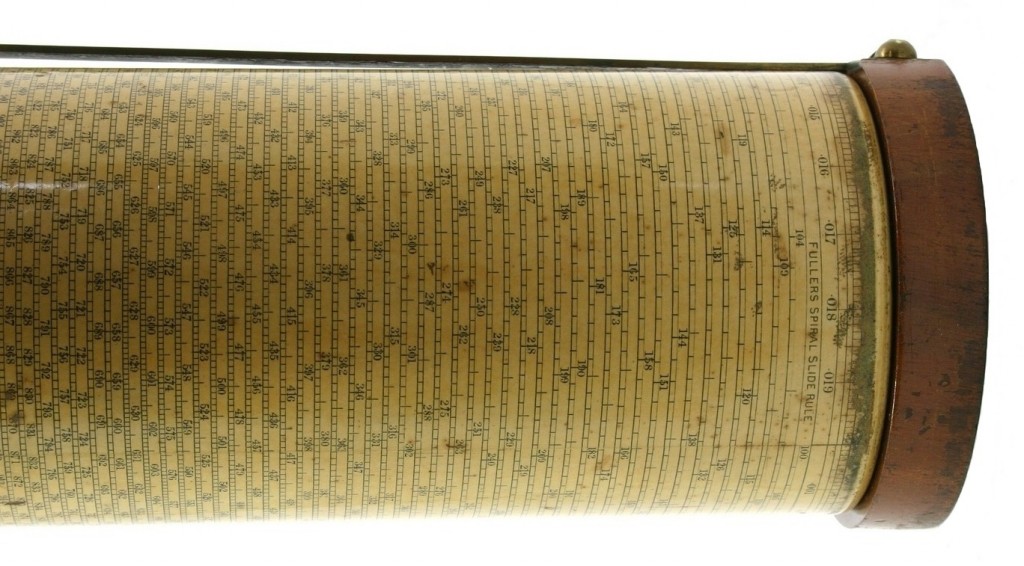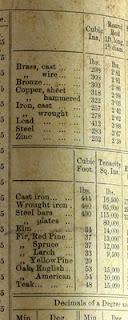by Menolly Lysne and Ari Gross
Since their invention in 1622, slide rules have played an important role in early calculations. They rely on a logarithmic scale to convert time-consuming multiplications into much simpler additions. Similarly, logarithms can be used to convert division calculations into simpler subtractions. This greatly reduced the amount of effort required for such complicated computations.
Fuller’s Spiral Slide Rule is a special breed of slide rule. Designed by Prof. George Fuller of Queen’s College, Belfast, in 1878, this slide rule is cylindrical, rather than flat. The Fuller’s Spiral Slide Rule in the UTSIC catalogue was made in 1901 by W.F. Stanley Hall in London and marketed by Keuffel and Esser Co. in New York.
The spiral scale of this slide rule gave its users the advantage of a 500-inches logarithmic scale, which contrasts greatly with the regular length of about ten inches. Its shape therefore allows its users greater precision, in this case up to 5 significant figures. In short, Fuller’s Spiral Slide Rule took precision calculation to a new level.
However, upon close inspection, we see that this device has more to offer than greater levels of precision. The slide rule contains not only the logarithmic scale, but a comprehensive set of tables. Some of these tables are purely mathematical, such as the table of natural sines. However, most of these tables are practical and oriented towards engineers. Whether it was imperative that its users knew the thickness of Birmingham Wire by gauge, or to what degree they required decimals of a pound, foot, acre, hour, year, or shilling is unknown. Did the average user need to know the weight of a square bar of wrought iron or the “tenacity” and modular elasticity of elm, fir (four different types of fir, actually), oak, or teak?
Certainly the maker of this slide rule thought so.
These tables give us valuable insight into the computational practices of a turn-of-the-century engineer. They let us know what sort of information such an engineer would be well equipped to have, quite literally, “on hand”. Both a precision tool and condensed reference object, this slide rule not only permitted precision calculations, but acted as a reference manual, every square inch of it filled with useful information. In short, it was designed to be a sort of all-in-one tool for the modern engineer.
With the advent of the electronic pocket calculator, slide rules have sadly come into disuse. However, this slide rule is more than just a “calculator”: it is a window into the past which affords us a glimpse into the life of its user.
Sources and Further Information:
John Lawrence, “Beginners’ Page: Filler’s Spiral Slide Rule.” Bulletin of the Scientific Instrument Society (98) 40-41, 2008.
[instrument_box acc_num=2010.lej.45]



